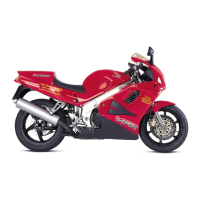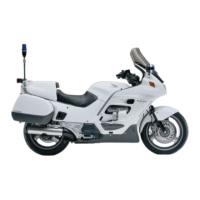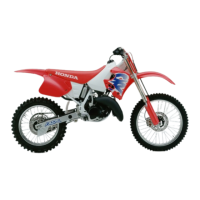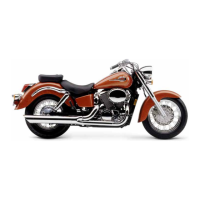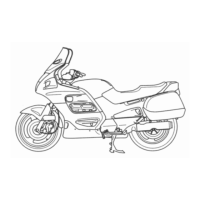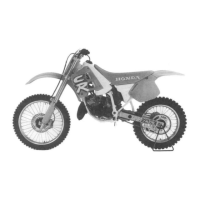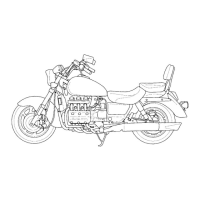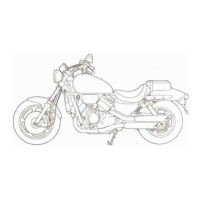
Do you have a question about the Honda 1995 VF750C Magna and is the answer not in the manual?
| Bore x Stroke | 70.0 mm x 48.6 mm |
|---|---|
| Compression Ratio | 10.8:1 |
| Cooling System | Liquid-cooled |
| Final Drive | Shaft |
| Front Tire | 120/80-17 |
| Rear Tire | 150/80-15 |
| Engine Type | Liquid-cooled, 4-stroke, DOHC, 90° V-4 |
| Fuel System | 4 carburetors |
| Front Suspension | 41mm telescopic fork |
| Rear Suspension | Dual shocks |
| Front Brakes | Dual disc |
| Rear Brakes | Single disc |
| Fuel Capacity | 3.4 gallons |
| Transmission | 5-speed |
Explains safety alerts like DANGER, WARNING, CAUTION, and NOTICE.
Emphasizes helmet use, eye protection, and other gear for injury reduction.
Pay attention to surroundings and ride within personal abilities.
Importance of helmets and eye protection for head and vision safety.
Specifies maximum weight capacity and cargo weight for safe operation.
Improper loading can cause crashes and serious injury or death.
Hot coolant can cause severe burns if system is opened when hot.
Describes front brake operation, fluid level, and pad wear checks.
Details rear brake pedal height and free play adjustment.
Step-by-step instructions to check engine oil level using the dipstick.
Importance of proper tire inflation for handling, tread life, and safety.
How to inspect tires for damage and when to replace them.
Identifies controls on the right and left handlebars for operation.
Importance and steps for performing a thorough pre-ride inspection.
Procedures for starting the engine, including side stand system and preparation.
Detailed steps for starting the engine in different temperature conditions.
Recommended shift points and proper shifting techniques for efficiency.
Techniques for normal and maximum braking, including safety reminders.
Benefits of regular maintenance for safety, economy, and performance.
Crucial safety measures to follow when performing maintenance tasks.
Safety measures before performing any maintenance or repairs.
Schedule of periodic inspections and maintenance tasks based on mileage.
Recommended oil type and viscosity for the engine.
Procedures for changing engine oil and the oil filter.
Steps to inspect drive chain slack and condition for proper maintenance.
Procedure for checking and adjusting drive chain slack.
Checking front brake pad wear using indicator cutouts.
Checking rear brake shoe wear using a wear indicator.


